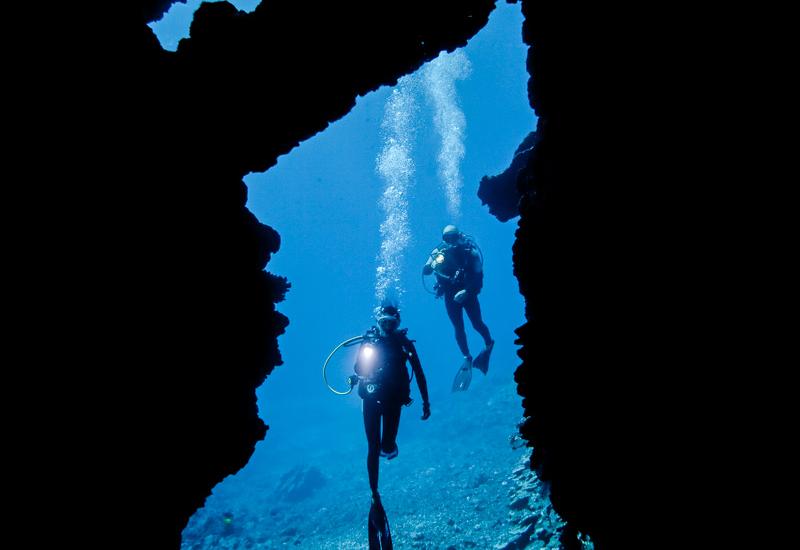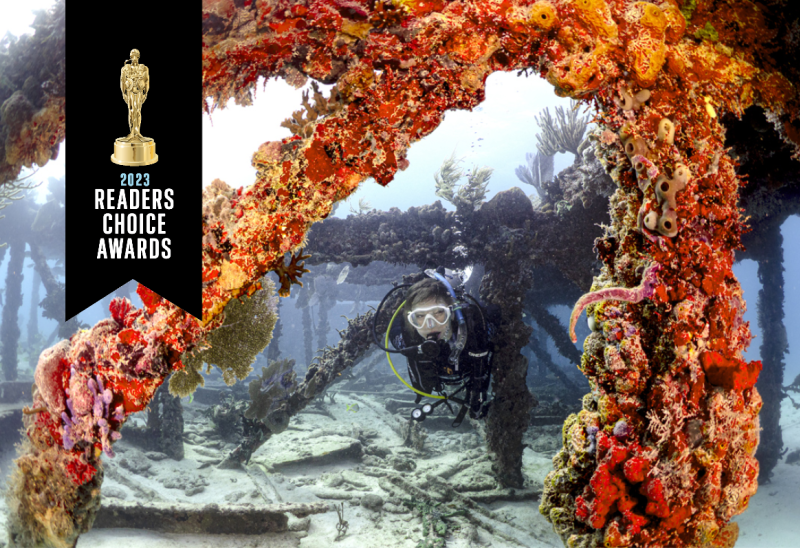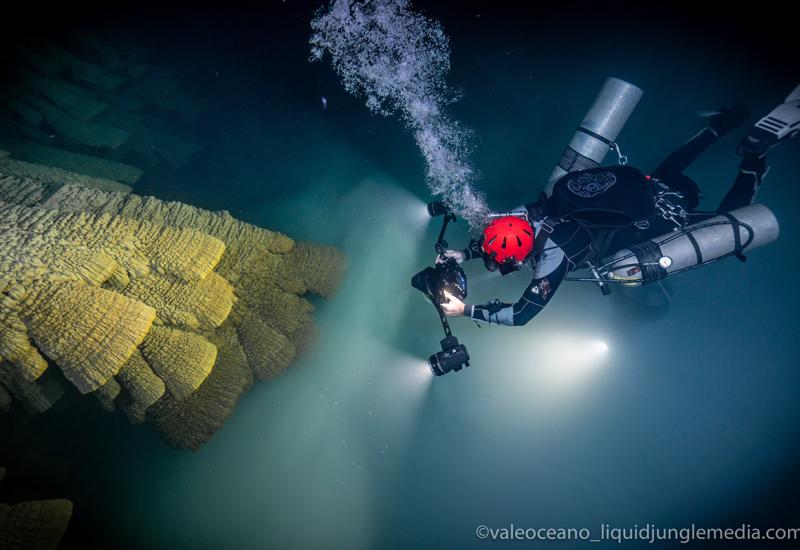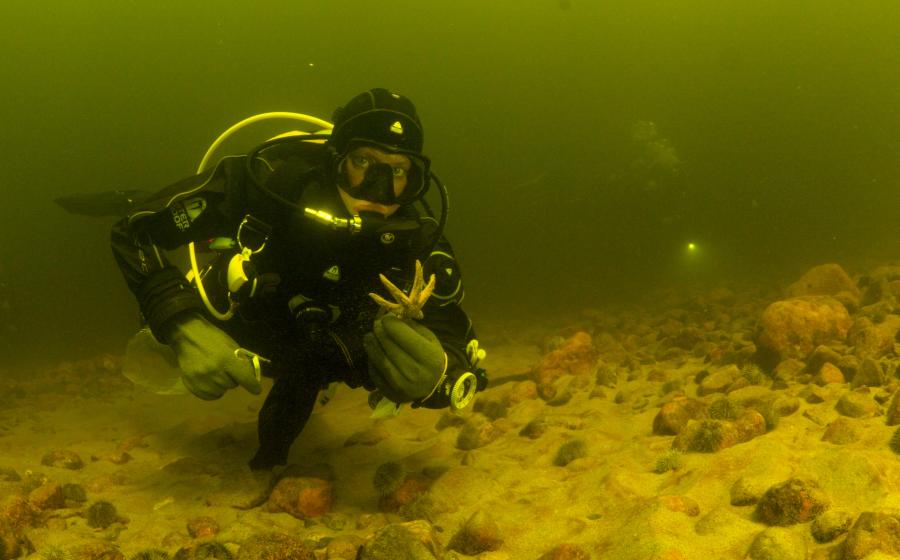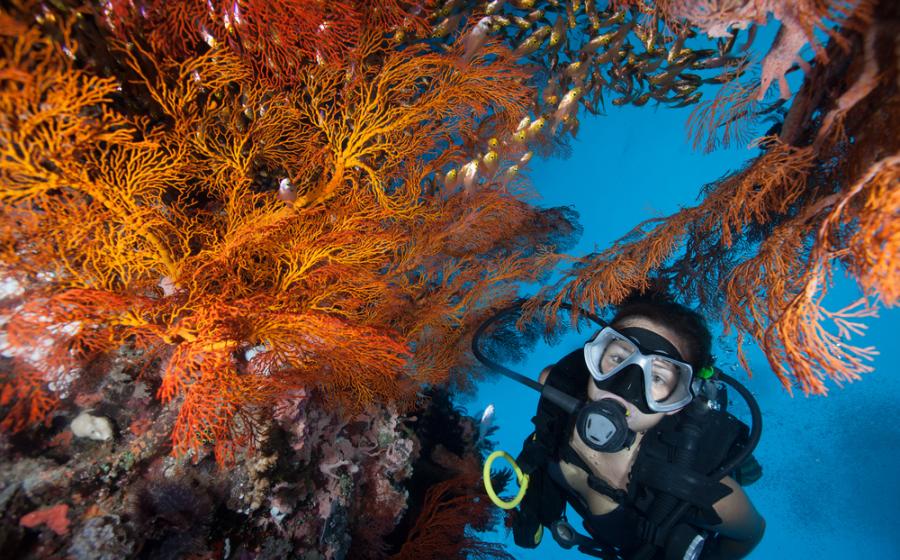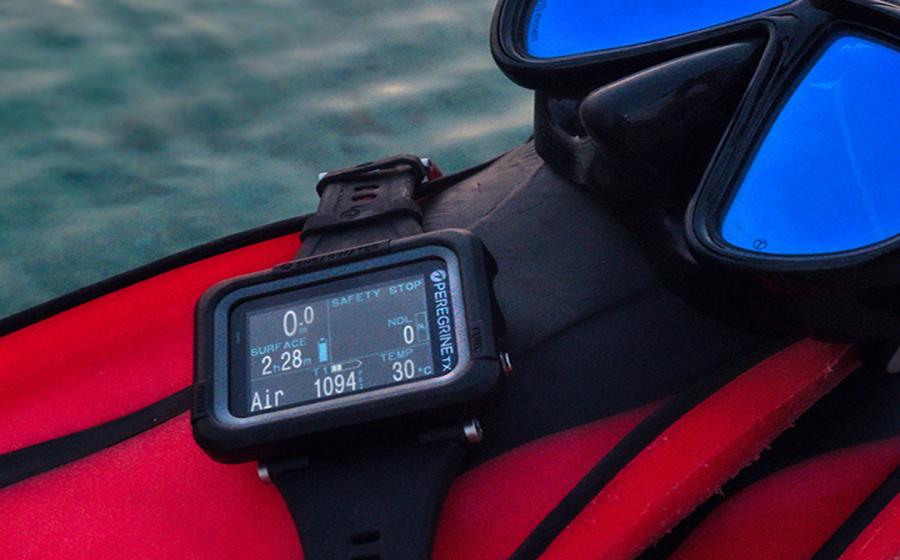What Pushes These Cave Explorers Into the Unknown
Editor's Note: This article relates to leading-edge exploratory cave diving requiring training, experience and special techniques. See your PADI Dive Center to start learning if you want to do this.
Patrick Widmann embraces suffer-fest cave expeditions in the name of exploration— and keeps coming back for more.
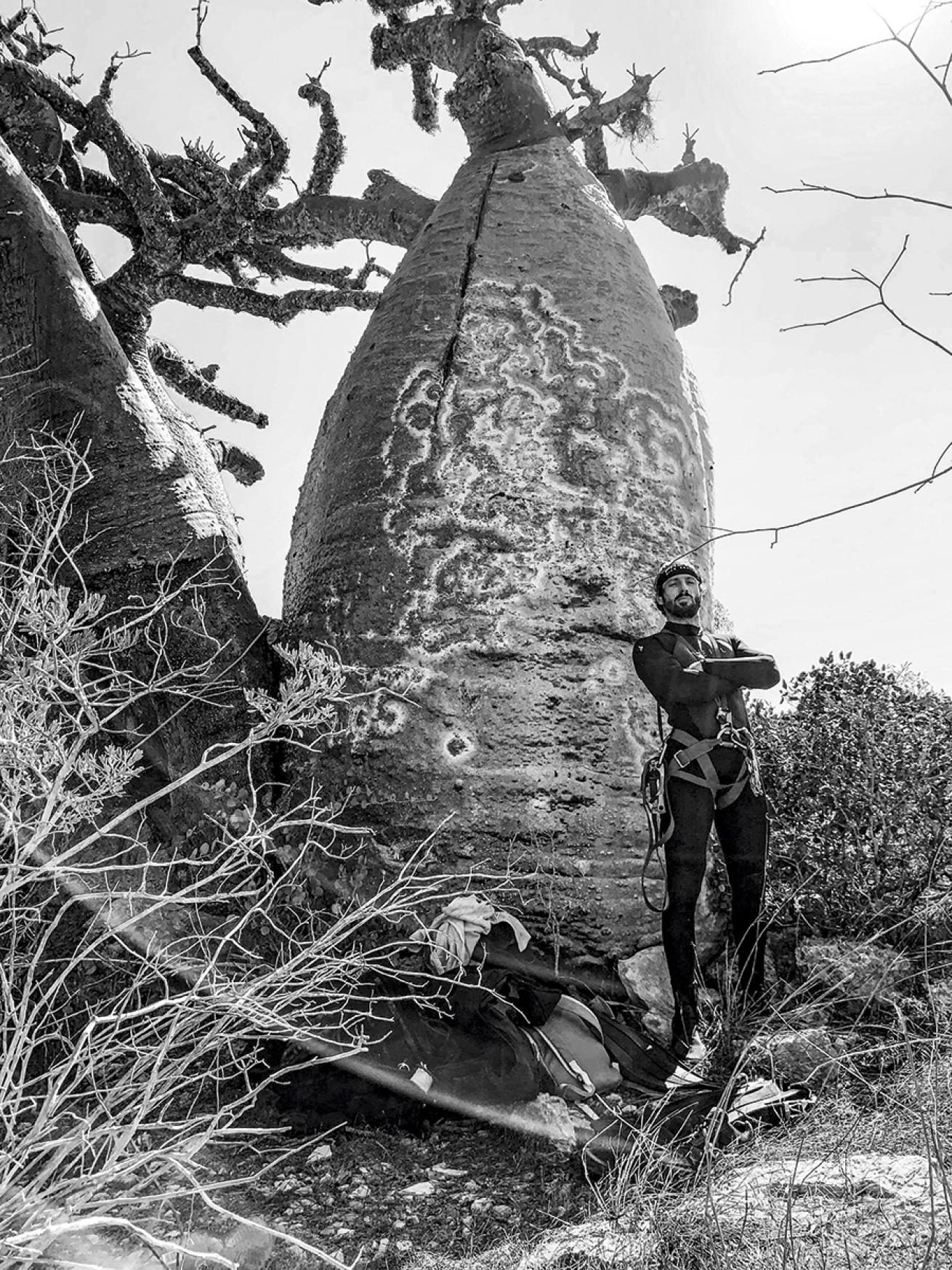
Courtesy Phillip Lehman/Madagascar Cave Diving AssociationPatrick Widmann
Hometown: Fusch, Austria
Age: 37
Year scuba certified: 1998
How he got into scuba: Widmann launched a professional diving career following a rock climbing incident. Left with a broken back—and an inability to satisfy the country’s required military service follow- ing high school graduation—he traveled to Egypt to get trained as a scuba instructor.
Moment that changed his life: A client gave him the book Beyond the Deep by William Stone, which is about really gnarly cave exploration in the Mexican state of Oaxaca. His fixation on caves—a sport that can merge rock climbing with scuba diving—has been guiding him ever since.
Years as a cave diving instructor: 12
Number of cave diving projects: 65
Expedition destinations: Dominican Republic, Haiti, Zanzibar, Madagascar, Belize
Number of checked bags on last Madagascar trip: 17
In cave exploration, there are no podium ceremonies. There’s no spraying of champagne bottles, no trophies, no chugging of milk. Just the pure satisfaction of knowing you were the first to have navigated a lone corridor through the middle of Earth.
It’s a drive—a compulsion—most divers will never know. But it’s what guides every minute of Patrick Widmann’s life. In cave diving circles, the 37-year-old Austrian is on track to become legend. He is known for being part of teams that have set a handful of records—including discovering and mapping Nascimento del Rio Sonador, the deepest cave in the Dominican Republic at 328 feet, and more recently, Anjanamba Cave, the longest flooded cave in Africa—teaching cave diving in Mexico and co-designing the xDeep Stealth 2.0 sidemount system, one of the best-selling sidemount systems in the industry.
When it’s go time for expeditions, Widmann and his cave diving partner, Phillip Lehman, trek to the most remote corners of the globe. In the past few years, Widmann and Lehman have focused on Tsimanampetsotsa National Park in the southwestern stretch of the African island of Madagascar.
“From my bed in Mexico to my bed in Madagascar takes five days,” says Widmann. After a series of flights, travel continues by SUV. “Where we explore, there are no roads. No water. No electricity.”
The camp is 42 miles from the nearest town, and demands a drive between seven and 11 hours thanks to a maximum speed of 12 miles per hour.
“Our drivers often get lost and don’t know where to go anymore,” he says. “What makes it so tense is being shaken violently for hours—every 30 seconds you’re catapulted to the roof of the car,” tossed about on the rocky terrain.
Upon arrival, camp is limited.
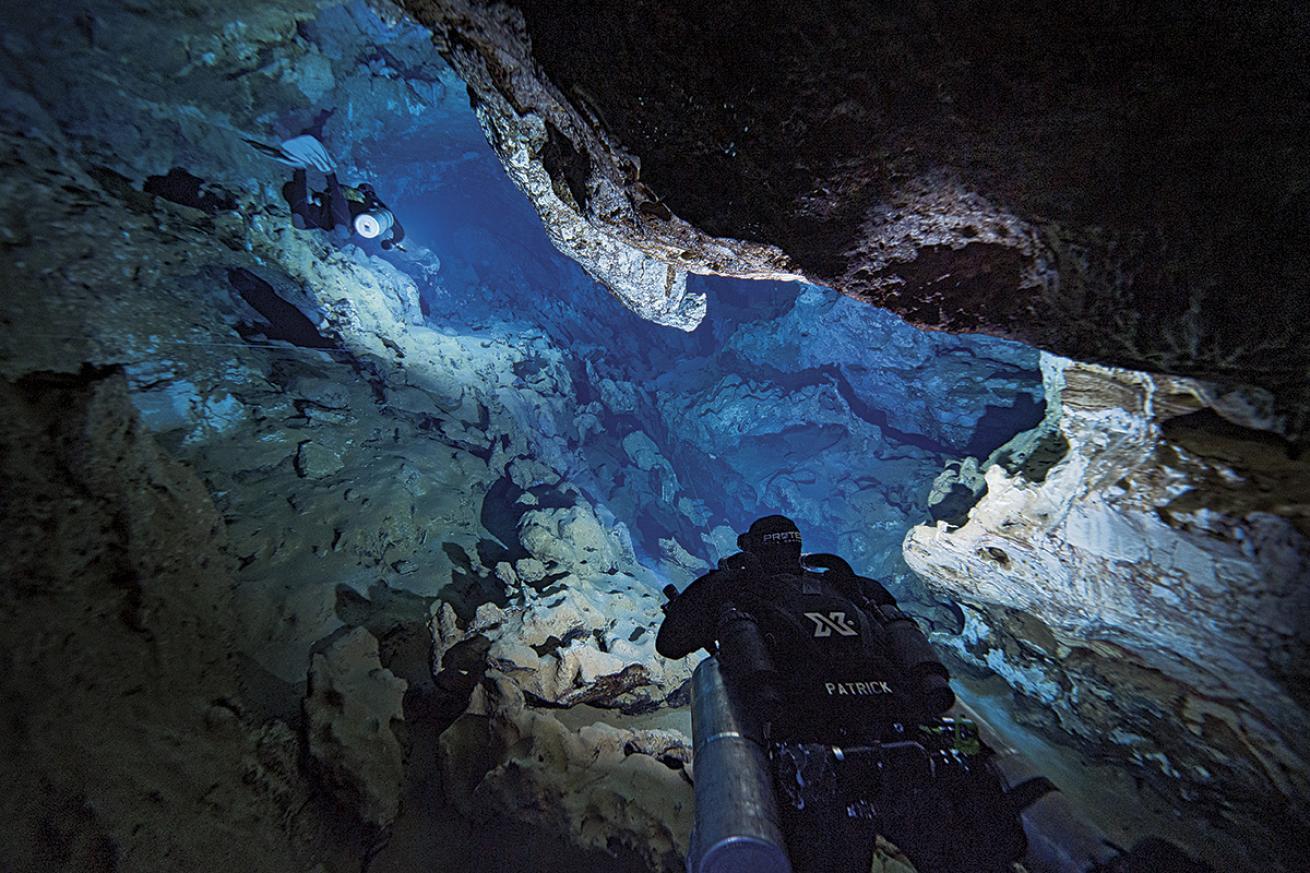
Courtesy Phillip Lehman/Madagascar Cave Diving AssociationA fascination with Google Earth led Patrick Widmann and Phillip Lehman to explore caves in Madagascar.
The arid climate is hot by day and freezing by night. Widmann’s mattress is old and thin. There is no comfort. Limited refrigeration. Just a lot of raw fish, thanks to the ocean nearby.
“I really hate fish—man, you have no idea,” says Widmann.
Despite these hardships, the mere thought of finding an unexplored passageway keeps the excitement alive, even after days or weeks of failure. One morning, after exploring for days without luck finding passageways, Widmann receives signal just long enough to read a scathing Facebook review from an unsatisfied student, one whose skills Widmann didn’t think were up to the safety standards required for cave diving. Widmann is disheartened, but tucks the thought away. He and his team are reaching the end of the expedition, and haven’t had success finding new routes. But they’re there to dive. They suit up.
Inside the cave, Lehman lays line. Widmann is behind him, surveying; together, they map every cave they dive.
“We are now in a really massive, collapsed room with car-size boulders. In between the boulders is just enough space for us to squeeze through. We do, but again we reach a dead end.
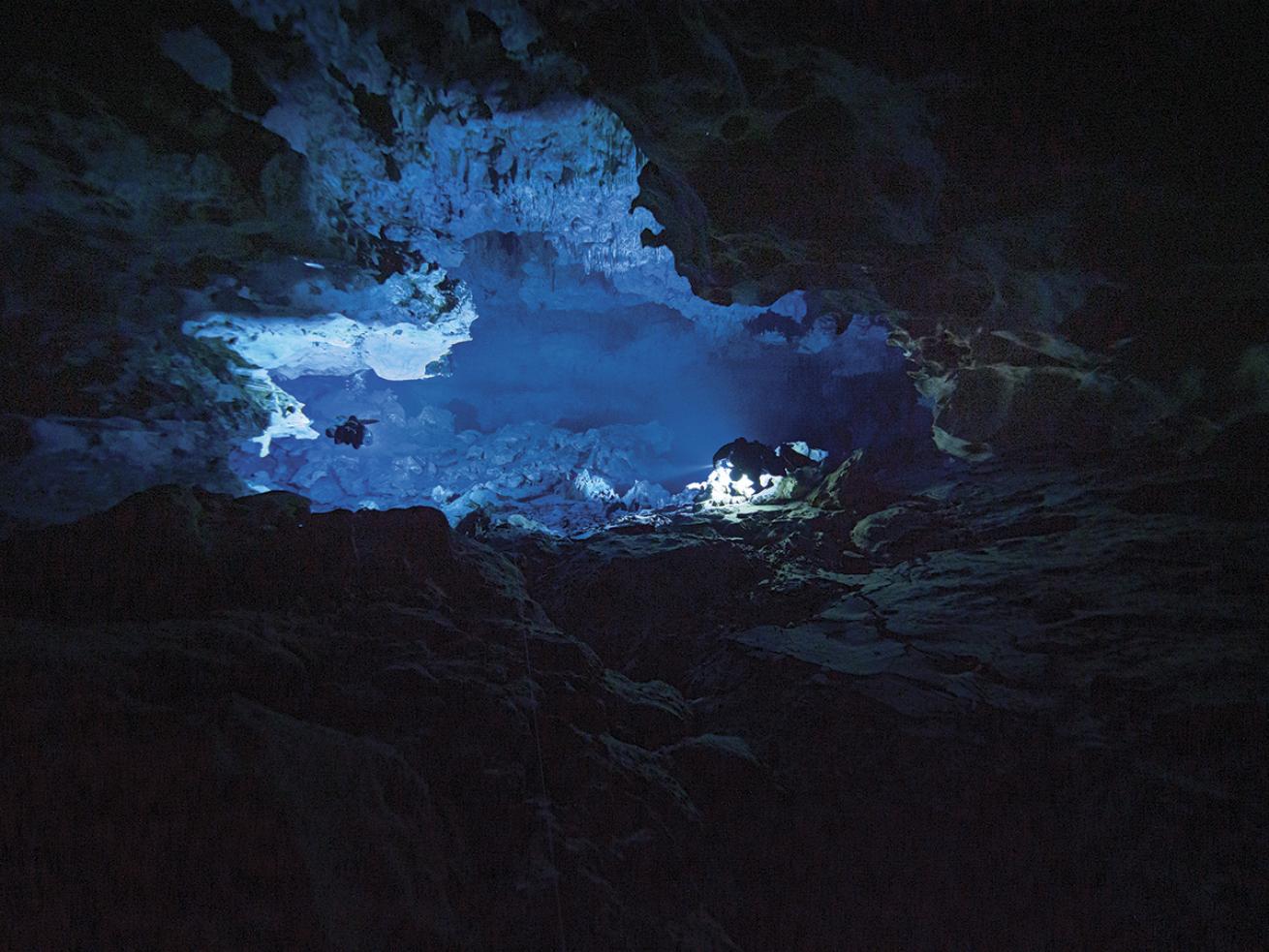
Courtesy Phillip Lehman/Madagascar Cave Diving AssociationWidmann has explored underwater caves in Belize, the Dominican Republic, Mexico and more
“We go back and find another hole— and another dead end. Every time, we keep coming back to the main line more and more demoralized.” Their goal for the day was to continue moving south in the cave, but they run out of options. Lehman decides to turn back. Widmann is just about to follow...
“Then I spot a super narrow hole. It’s a tunnel that for sure had collapsed. It looks like a crescent moon with the pointy ends aiming down...and it heads perfectly north—the direction we came from. Any other day, I would never have swam down that tunnel.” But on this day, Widmann isn’t ready to face the real world again. In he goes. Within seconds, the scenery changes completely.
“I’m inside the most picturesque room with incredible decoration. The floor is ultra brown, and the walls are gleaming white. The water is steel blue. “It’s as if you just walked into a Walmart. It’s completely empty and the lights are out. The room is so massive that there is no logical reason that the roof wouldn’t come down. In that moment, so much emotion rushes through your body. I have been doing extreme sports since I was 10, but nothing comes remotely close to thinking you will walk home with your tail between your legs—and then suddenly in front of your eyes is the most badass room the world has ever known.” It’s too much to contain. Says Widmann, “I’m screaming into my mouthpiece, and I am giving the horns sign to myself.”
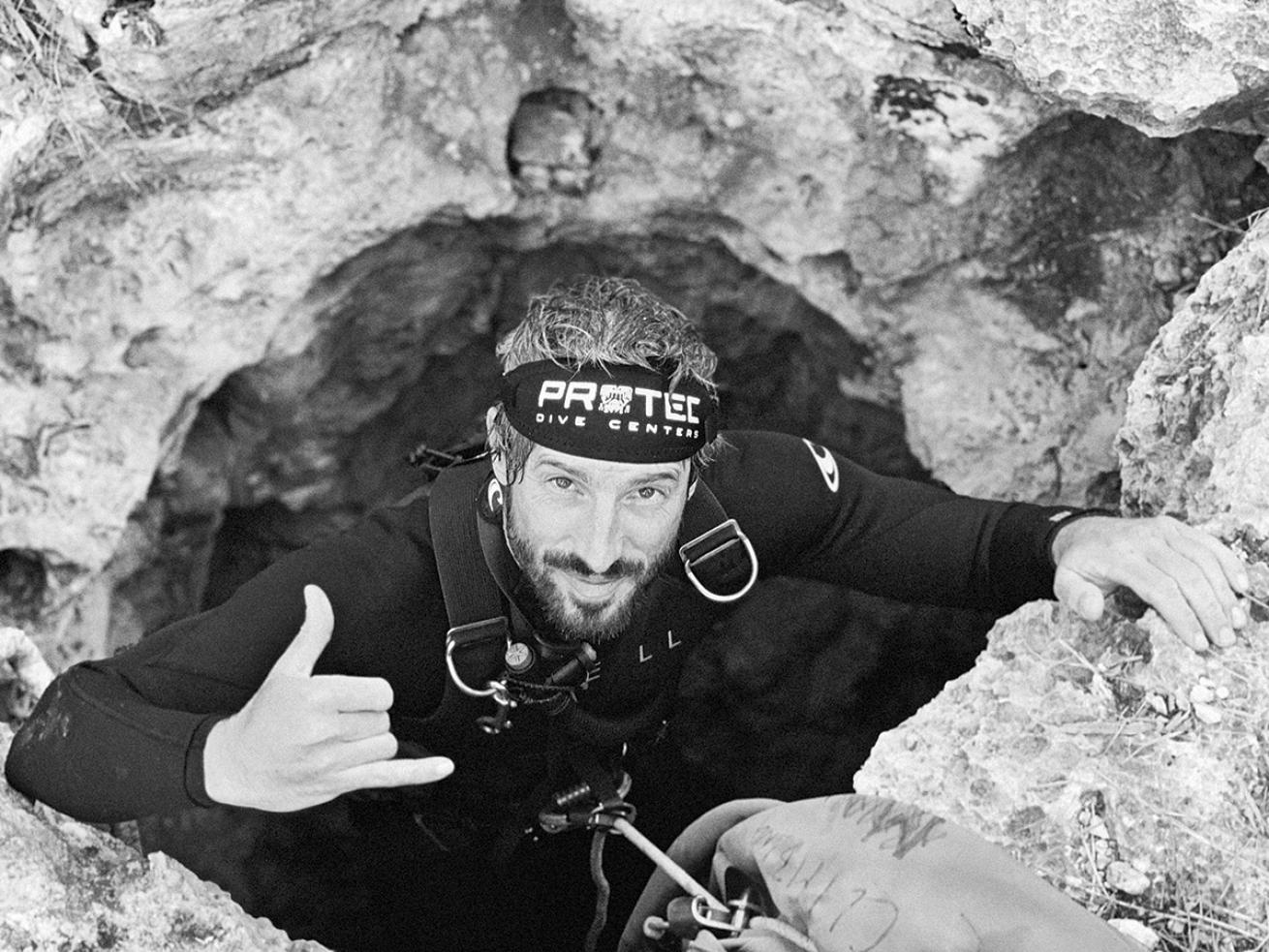
Courtesy Phillip Lehman/Madagascar Cave Diving AssociationPatrick Widmann
Widmann pauses to take it all in, but his next movement is to exit the room. This is a moment he wants to share with his cave diving partner. “I realize I can’t do this alone.”
Lehman enters, takes it all in, then takes Widmann’s head in his hand and shakes him in excitement. It’s a triumph for the pair—to be the first humans ever in this pocket of the planet.
Together, they keep meeting success after success. Their relationship began back in 2009, when Lehman came to Mexico to learn proper cave diving technique from the pro.
“Patrick notices the slightest detail of what you are doing wrong or right,” says Lehman. “Even little things that I think that he didn’t see, he will point out and say, ‘That’s really good,’ or he’ll mention what needs work. There is nothing that he will let go.”
That thoroughness has served him well on expeditions, unable to give up on a project until he’s attempted every possible route.
“I’m a bit of a stubborn bastard,” admits Widmann.
But, that dogged spirit can’t triumph without the right setting—and finding the locations is where Lehman’s relentlessness shows up.
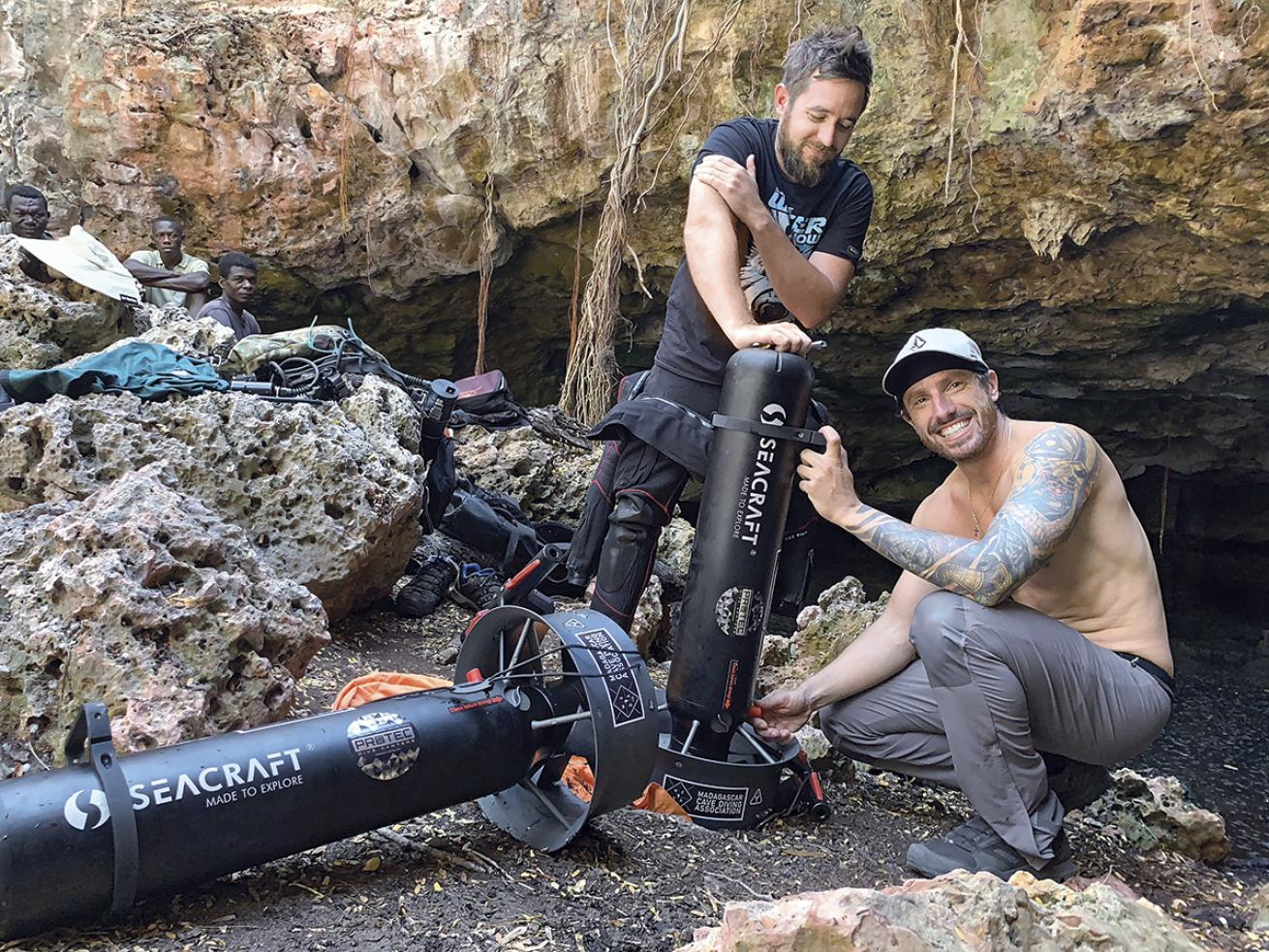
Courtesy Phillip Lehman/Madagascar Cave Diving AssociationWidmann and team member Ryan Dart gear up in Madagascar.
The Madagascar project started thanks to Lehman, who, according to Widmann, “is completely addicted to Google Earth.” Lehman spends hours online, scouring maps for potential limestone areas—with Madagascar being one of his jackpots.
In 2013, he started scouting the outpost island because it’s home to an epic surf wave, Flame Balls. Says Lehman, “I told Patrick that the worst-case scenario is that it will be the best surf trip we have ever done.”
Their first trip was the most physically taxing, with the team scouting on foot. “We had to go to villages and ask where they get their water,” says Widmann. Then they’d hike in and see what they could see. “For three weeks, we drove all over the place and found nothing.”
Until they finally find a sinkhole. Widmann gears up and dives in. He sees something on the roof and pauses.
“What I found was so covered in fungi that at first I thought it was a tree. Then I saw the Nike shorts.”
He exits and confers with Lehman, not sure if they should alert their guides to the body, fearful that the guides possibly had something to do with the death. But when the guides hear their heated discussion, they reveal that the cave is haunted, after swallowing up a local goat herder five months earlier. Traumatic, yes.
But exploring means not knowing what you will find, dead bodies and all. Says Widmann, “If you want to do mountain expeditions in the Himalayas, you have weather forecasts, satellite imagery, maps. You know where you are going and what to expect. As cave explorers, we never know what we will find.
“It could be absolutely nothing. But every once in a while, you put your head in the water and get spit out in one of the most glorious places on planet Earth.”


